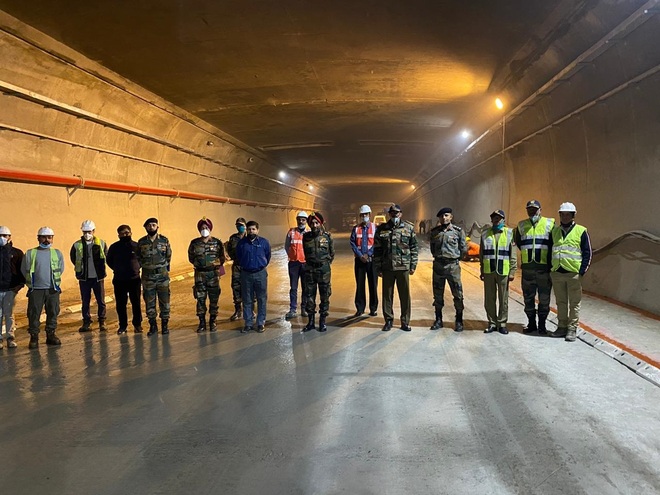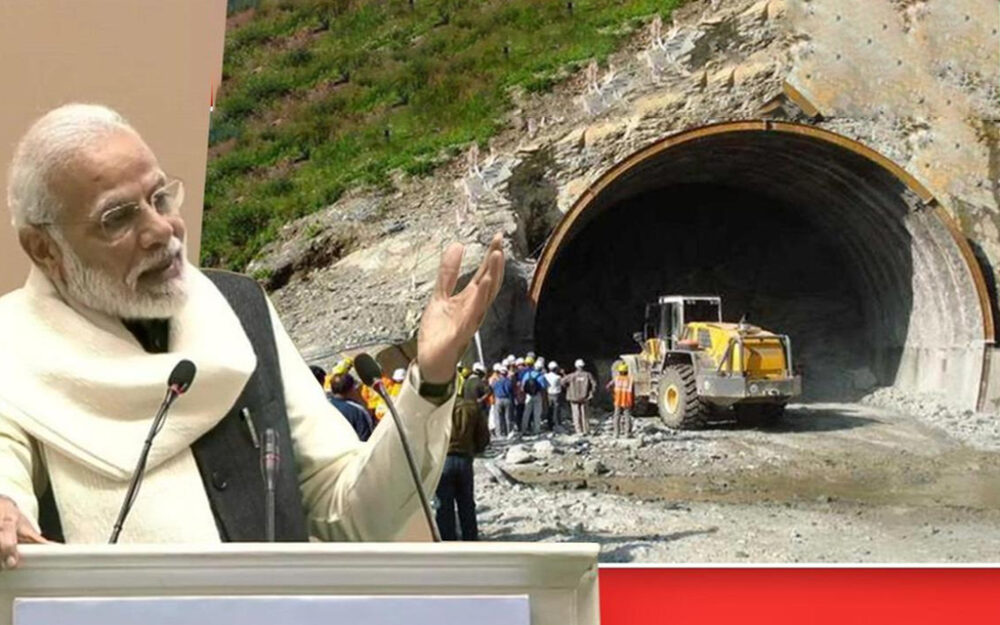The world’s longest motorable roadway at Rohtang, situated above the altitude of 10,000 feet, is nothing less than an engineering marvel. This ‘Atal-Rohtang-Tunnel’ can take you Spiti from Manali in just 10 minutes. Yes, we are not joking. The Atal-Rohtang-Tunnel took over 10 years to be completed, at the cost of nearly 4,000 crores, according to information available.

The tunnel is extremely significant from the military logistics point of view, told Himachal Pradesh, Chief Minister Jai Ram Thakur adding that Prime Minister Modi visited the strategic Atal Tunnel, with a keen interest in early completion of this mega project. He said it would be inaugurated by Prime Minister Narendra Modi in the upcoming month.
CM Jai Ram Thakur reviewed the progress work of the tunnel with officials of the Border Road Organisation (BRO), reported TOI.
The Atal-Tunnel, earlier known as the Rohtang-Tunnel, is situated at an altitude of over 3,000 metres. The 9.2 kilometres long tunnel passes under the Rohtang Pass in the eastern Pir Panjal range on the Leh-Manali highway. It has a width of 10.5 metres and a height of 5.52 metres. A car can zip through at 80 kmph inside the tunnel.
The tunnel also includes distinguished features, which includes, telephone facility at every 150 metres, a fire hydrant at every 60 metres, emergency exit at every 500 metres, with the presence of broadcasting system and automatic incident detection system with CCTV cameras at every 250 metres. There is also a turning cavern at every 2.2 kilometres and air quality monitoring system after every kilometre.
Apart from this, it is also the first tunnel that uses Rowa flyer technology, that allows engineers to work at inverted levels with ease and comfort.
Being the country’s first escape Tunnel, it is of utmost importance. Because of the topography of the region, it has escape Tunnels within the main tunnel, which would provide an emergency exit in case of any incident. These escape Tunnels are located after every 500 metres with a vehicle speed permitted to 80 kmph and around 3,000 vehicles will be able to run at once on both lanes of the tunnel.
The tunnel, with the maximum speed of 80 kmph, is expected to see the traffic of 3,000 cars and 1500 trucks a day.

As mentioned earlier, the tunnel is of strategic importance from various perspectives. Most important being the military logistics point of view. As it is one only of the two routes into Ladakh and currently, the movement of armed forces to the forwarded areas of Ladakh from the Manali side is feasible only from June to mid-November.
Apart from this, it will also help to boost tourist activities in Lahaul-Spiti district besides creating employment and self-employment avenues in the area. It will also reduce the distance between Manali and Leh by 45 kilometres and drive time by approx seven hours with all-weather connectivity to Leh and forwarded areas of Ladakh.









The Indian Drama,is to fool the dumb Indians, and to impress their White Masters. The state of Indians is so pathetic, that they ,in 2020,are still mesmerised, by so-called Infra Projects – which can be blown to bits by the Chinese Precision Guided Ammo – assuming PlLA jets do not bomb it !
The Indian ADS which shot down their own Chopper in Bugdam – will use Indian ADS toprotect their tunnel from Chinese Missiles ? Also ,Indians have no ability to strike similar Chinese Infra , in Tibet – except by sending their Jets, deep into Tibet – which will be shot down, by Chinese PLAF and ADS. In any case, Chinese have many tunnels and many logistics options – while India has ONLY 1 TUNNEL..
Y have the Indians Built this tunnel ? Each tunnel has an entry and an exit,and an approach and an exit road.In the winters, there would be snow,ice and avalanches, and so,the roads will be unusable or will slow down,the logistics, and in some cases, the roads will be closed down.
Then,the Tunnel covers less than 15%,of the distance,to the target destination.dindooohindoo
Therefore,if the PLA bombs the entry OR the exit of the Tunnel,or the Approach road to OR beyond the tunnel
or the 100s of Kms of road, after the tunnel – THE TUNNEL WILL BECOME UNUSABLE ! If the road is bombed then the chances of a landslide, are almost 100% ! And if the approach roads ,to the landslide, are also bombed, no crane will reach the location, and the cranes will have to BE AIRLIFTED ,by specialised Choppers which will take time to organise,and will be sitting ducks, even for MANPADs.
So Y did the Indians build the tunnel ? To save time ? For what ? In war, Time has the proxy of “Inventory”.If time is a vagary of war, then you carry more inventories (of men ,munitions, spares and food).If a war breaks out,the Tunnel will be destroyed, by the PLA – it cannot be defended, by Indian ADS.
Also,in matters of military logistics,in a war scenario – COST is NOT a Factor – and in any case,saving a few hours in logistics will NOT yield any material reductions in road freight – but will save the air freighting (by C-130s or Choppers)
Even if a surge is planned by the Indians – it is best done by air – as time is of the essence. Of course the aircargo will be shotdown – but it is easier to blow up the stationery target,id.est.,The Tunnel,and its matrix of impotence.
The Chinese say that the Indians took 15 years to make the tunnel. The Chinese must understand that the Hindoo God Rama (whose wife ran away,with Ravana- the King of Lanka),took 12 years to make a bridge of stones, to Lanka – and the bridge was MADE ENTIRELY BT APES.
EVEN AFTER 5000 YEARS,THERE IS NO IMPROVEMENT IN THE CAPABILITIES OF THE INDIANS.